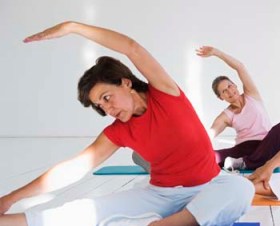It’s an inevitable truth: as we get older, our muscles deteriorate and we become weaker.
Not only can this be an immensely frustrating change, but it can also have many other, more serious implications.
We become clumsier and begin to have more falls, often resulting in broken bones or even more severe injuries.
Now one study, led by Dr Alexandra Sanger from the University of Salzburg, is taking a new approach: scientists are examining the effects of different exercise regimes in menopausal women, with the aim of developing new strategies for delaying and reducing the initial onset of age related muscle deterioration.
Dr Sanger’s research group has investigated two particular methods of physical training.
Hypertrophy resistance training is a traditional approach designed to induce muscle growth whereas ‘SuperSlow’ is a more recently devised system which involves much slower movement and fewer repetitions of exercises, and was originally introduced especially for beginners and for rehabilitation.
“Our results indicate that both methods increase muscle mass at the expense of connective and fatty tissue, but contrary to expectations, the SuperSlow method appears to have the greatest effect,” reveals Dr Sanger.
“These findings will be used to design specific exercise programs for everyday use to reduce the risk of injury and thus significantly contribute to a better quality of life in old age.”
The study focussed on groups of menopausal women aged 45-55 years, the age group in which muscle deterioration first starts to become apparent.
Read more information at Medical News Today






